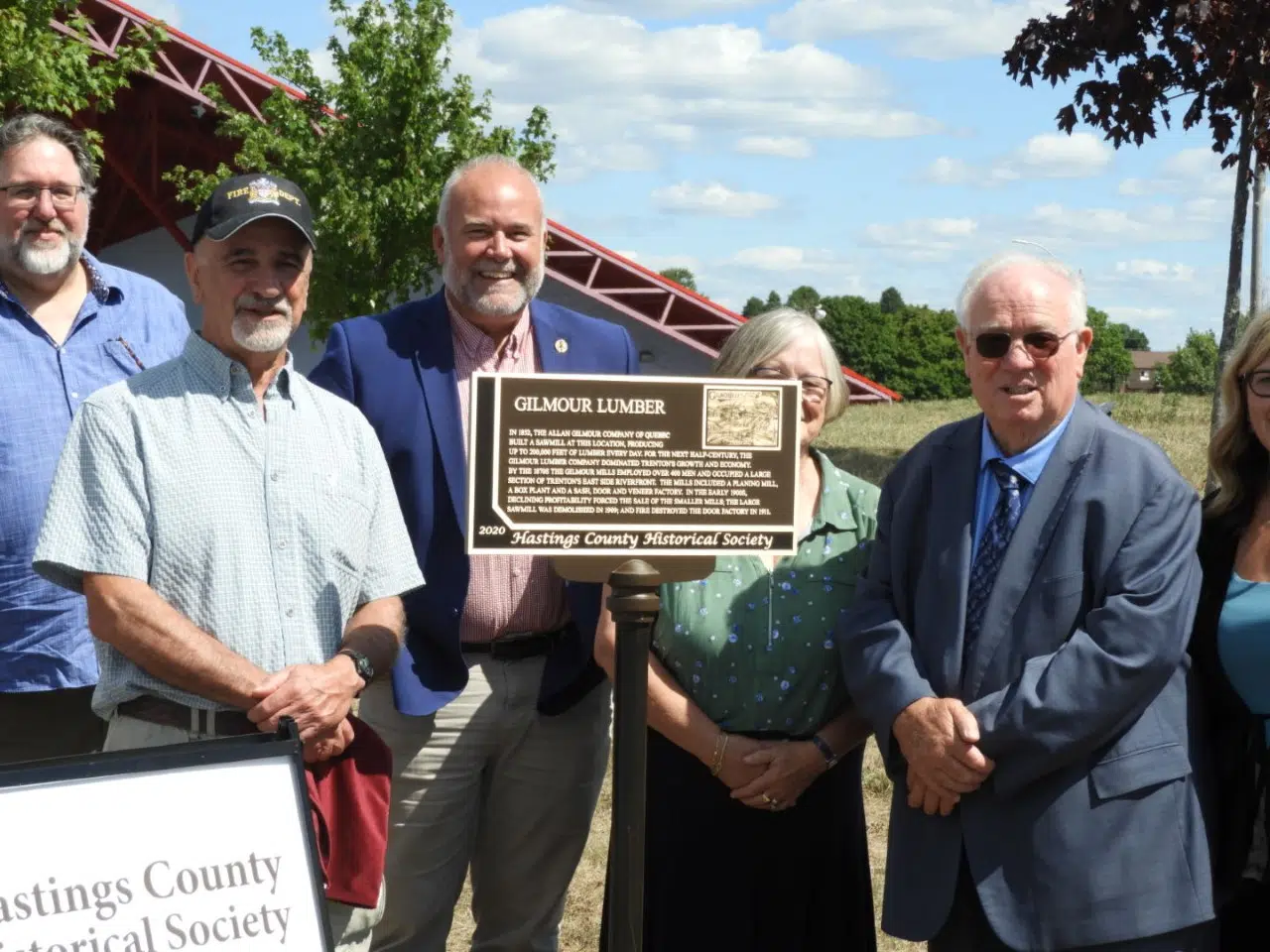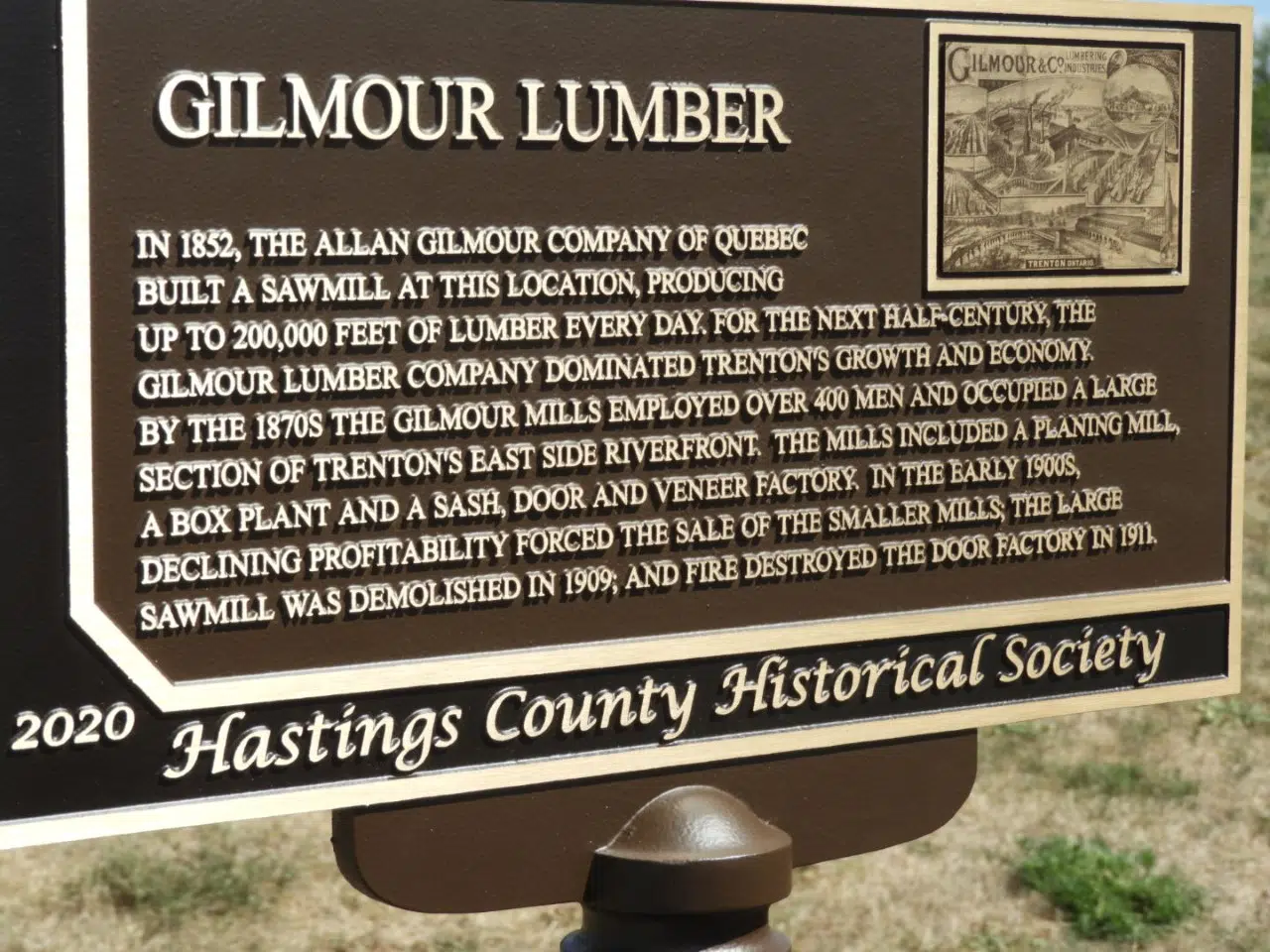There would be “no Trenton without Gilmour Lumber.” So said celebrated local historian and videographer Sean Scally at a ceremony unveiling
a plaque commemorating the lumber mill’s storied history Saturday, August 13.
The plaque is located near the bayshore in the area of the Bob Wannamaker Amphitheatre. Scally outlined the history of Gilmour Lumber to a group of about 40 people.

Quinte West-based historian and videographer Sean Scally. (Photo: Quinte News)
Lumber barons, the Gilmour family, began with a small family business supplying the lumber industry in Scotland in 1790 and expanded into Canada with a sawmill in
New Brunswick near the Miramichi River in 1812 and then opened mills in Quebec.
In 1852 the Gilmours opened a mill on the Bay of Quinte near the mouth of the Trent River. It didn’t take long and Gilmour Lumber Trenton
became the world’s largest sawmill, employing 700 people. It was 43 metres long and some three storeys in height.
Rail line spurs ran into the plant to take the finished planks, and ships docked at the mill to move them by water.
In those days the Trent River was literally jammed with logs floating down from the northern old growth forests.
One member of the Gilmour family, David, was Trenton’s largest property owner and most powerful resident. He lived in a still-standing heritage home at the top of
the Dundas Street West hill overlooking his mill on the bay. For some years he also owned property housing 700 residential units for employees and their families.
In 1880 Trenton’s first telephone system was installed, but it only served the Gilmour family, connecting the mill with Gilmour’s home, known as Prospect House.
Fires were a huge issue at lumber mills everywhere and despite the company’s efforts, fire destroyed the original mill in 1881 and Gilmour established a full-time uniformed fire brigade consisting of 25 to 30 men and ran a steam-powered fire engine with on-site water pumping capacity.
A new mill was established with 600 employees and on-site lumber storage capacity of 30 million feet of lumber.
In the 1890s, Gilmour established a state of the art door, sash, and window factory up the river from the mill. There it made top quality pine and hardwood products which were
shipped to Europe and other parts of the world.
As a new century approached, the supply of lumber dried up as forests were depleted in the region and an Algonquin land deal by the Gilmour family failed. Gilmour Lumber was not profitable.
The mill was put up for sale in 1904 and closed in 1909 while the door, sash, and window factory burned down in 1911.
David Gilmour left Trenton for Buffalo in 1905 and so ended the “Gilmour era”, one which built and defined Trenton for half a century.
Ending his address at the unveiling ceremony, Sean Scally said, “In 1885 Gilmour attended a luncheon with other prominent residents and told them
that at Gilmour Lumber the company always tried to align its goals for the benefit of the wider community, something that the City of Quinte West continues to do
to this day.”
The plaque, the ceremony, and the research leading up to the event was a collaboration between the Trent Port Historical Society, the Hastings County Historical Society, and
the City of Quinte West.

From left to right: Sean Scally, Gerry Fraiberg of the Hastings County Historical Society, MPP Todd Smith, Wendy Ouellette of the Trent Port Historical Society, Quinte West Mayor Jim Harrison. (Photo: Quinte News)






